Sustainable gardens – eco friendly ideas for your outdoor space
Create a garden that supports the ecosystem
Every garden has the potential to become a beautiful, natural space that plays a crucial role in improving and supporting the wellbeing of both people, wildlife and the planet.
'During the pandemic people have appreciated their gardens to a greater degree than ever and have become more aware of wildlife, so they are increasingly keen to learn more about gardening and in gardening to enhance the environment' say the RHS. 'Happily it is neither difficult nor expensive to get greater benefit from gardens without harming the planet.'
Sustainable gardens – eco-friendly ideas
We speak to the experts of the gardening world to explore the ways we can all do our bit, by creating sustainable gardens for all spaces.
1. Create a woodland wonderland
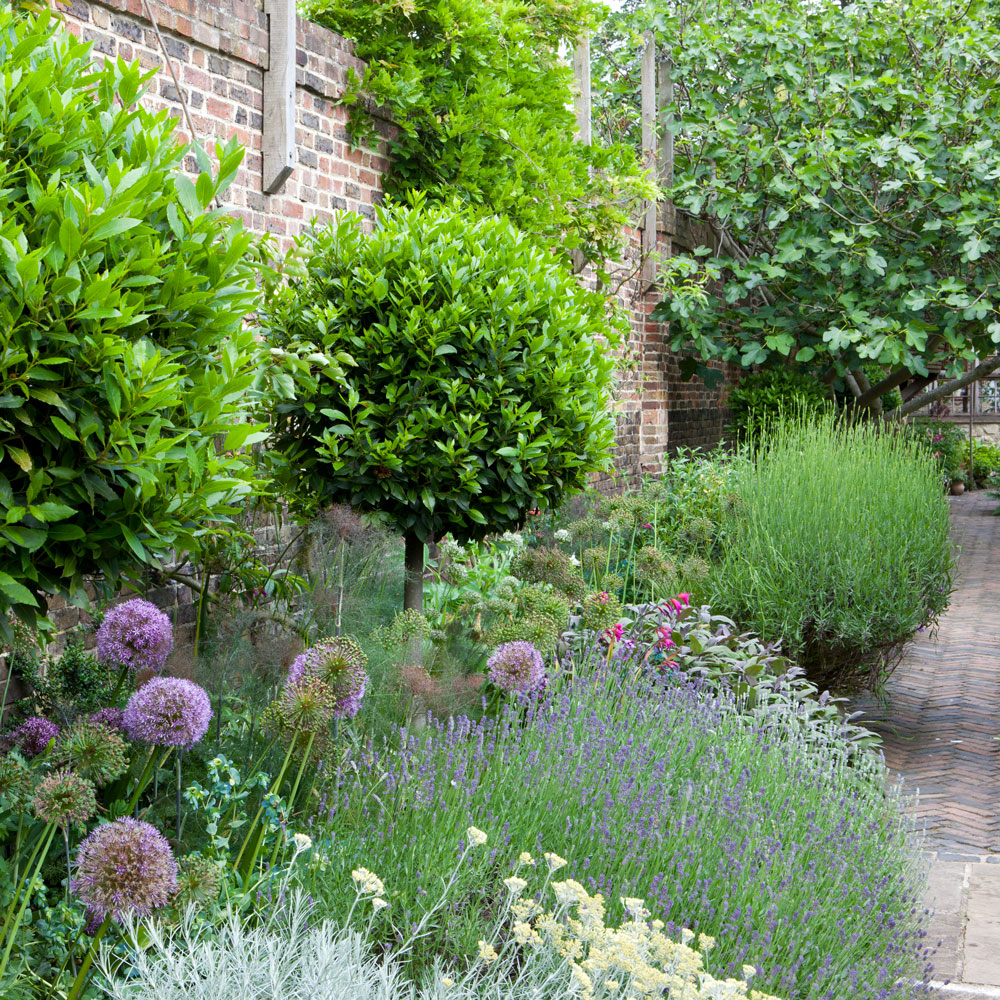
'The UK was historically mostly covered in trees and woodland' explains Phoebe Aubury at Natural Design Studio. 'This gives us a big clue as to what we need to do to allow native species to thrive in the future.'
'This idea is definitely breaking the mould in terms of what is considered aesthetically desirable in the UK, as we mostly see open spaces and endless lawns. But we propose that the benefits give rise to a pioneering new woodland look for gardens, where shade and shelter are plentiful! Think a Midsummer Night’s Dream, with relaxing chair swings, soft lighting and dining glades.'
2. Build permaculture flower beds
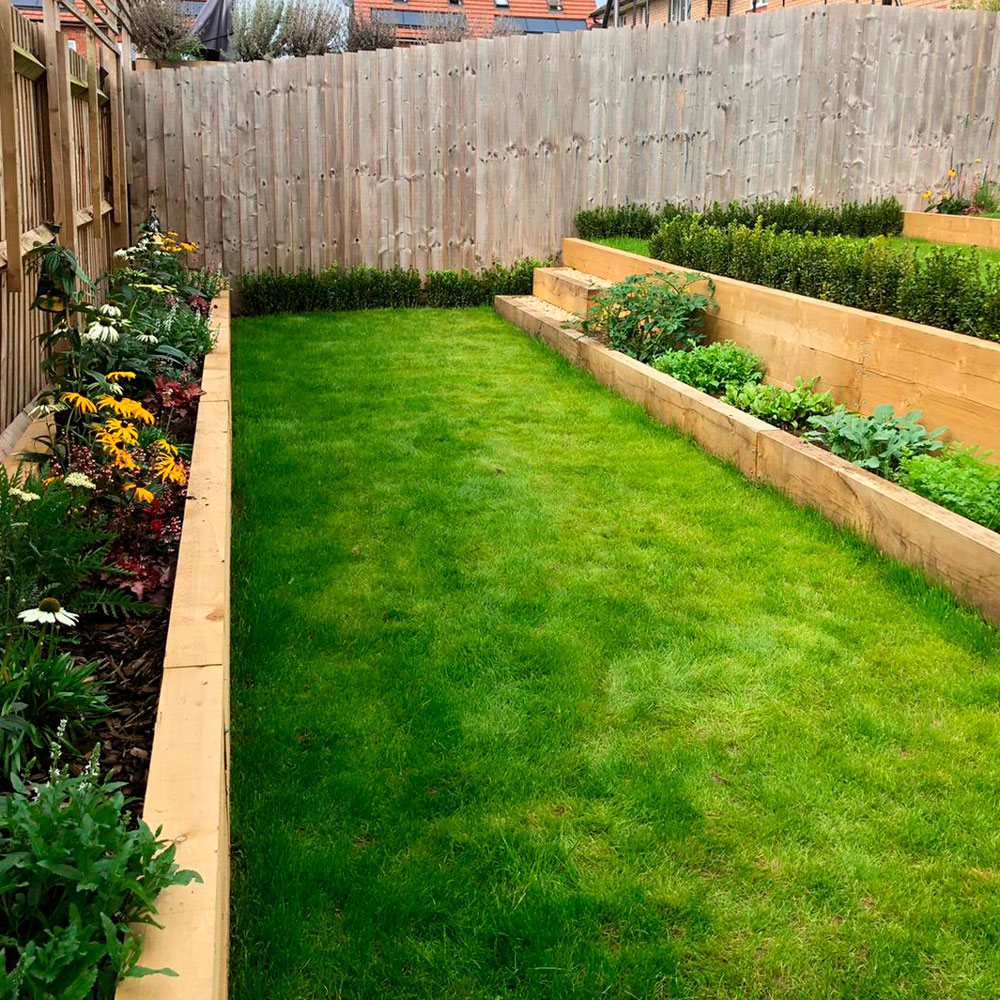
'The word permaculture is derived from the words ‘permanent’ and ‘agriculture’,' Phoebe explains. 'It aims to work with nature and not against it, mimicking the systems we see in the natural world – using them to our advantage. This is not only good for the planet but it will also greatly reduce maintenance required in the garden.'
'Permaculture beds need less watering and fertilising as they produce and hold their own moisture and nutrients, you may find you get a better yield and more blooms thanks to this!'
Get the Ideal Home Newsletter
Sign up to our newsletter for style and decor inspiration, house makeovers, project advice and more.
3. Balance hard and soft landscaping
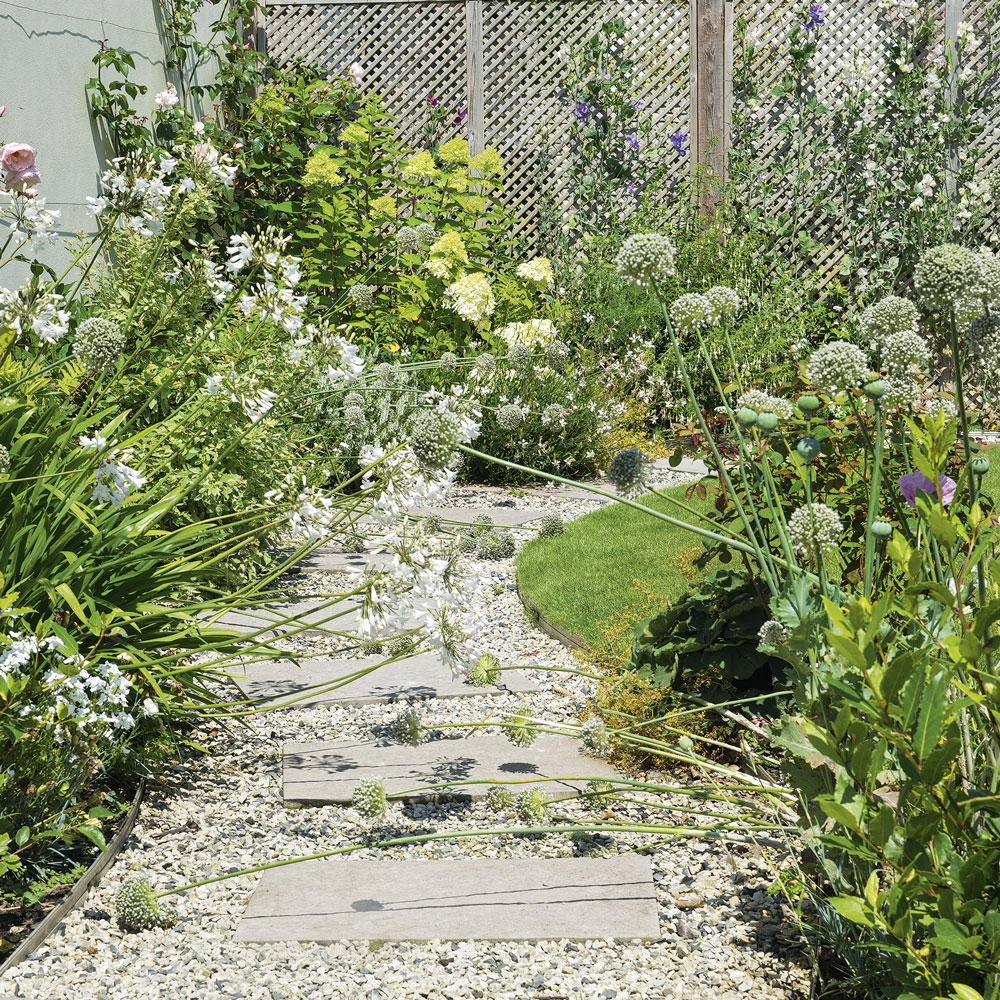
'Choose a design that has a good balance between hard and soft landscaping, ideally at least 60 per cent soft landscape,' advises James Scott, MD of The Garden Company.
Opt for soft landscaping that is, 'self-sufficient and doesn’t require ‘extreme maintenance’ techniques (e.g. excessive use of fertiliser).'
4. Choose thoughtful materials
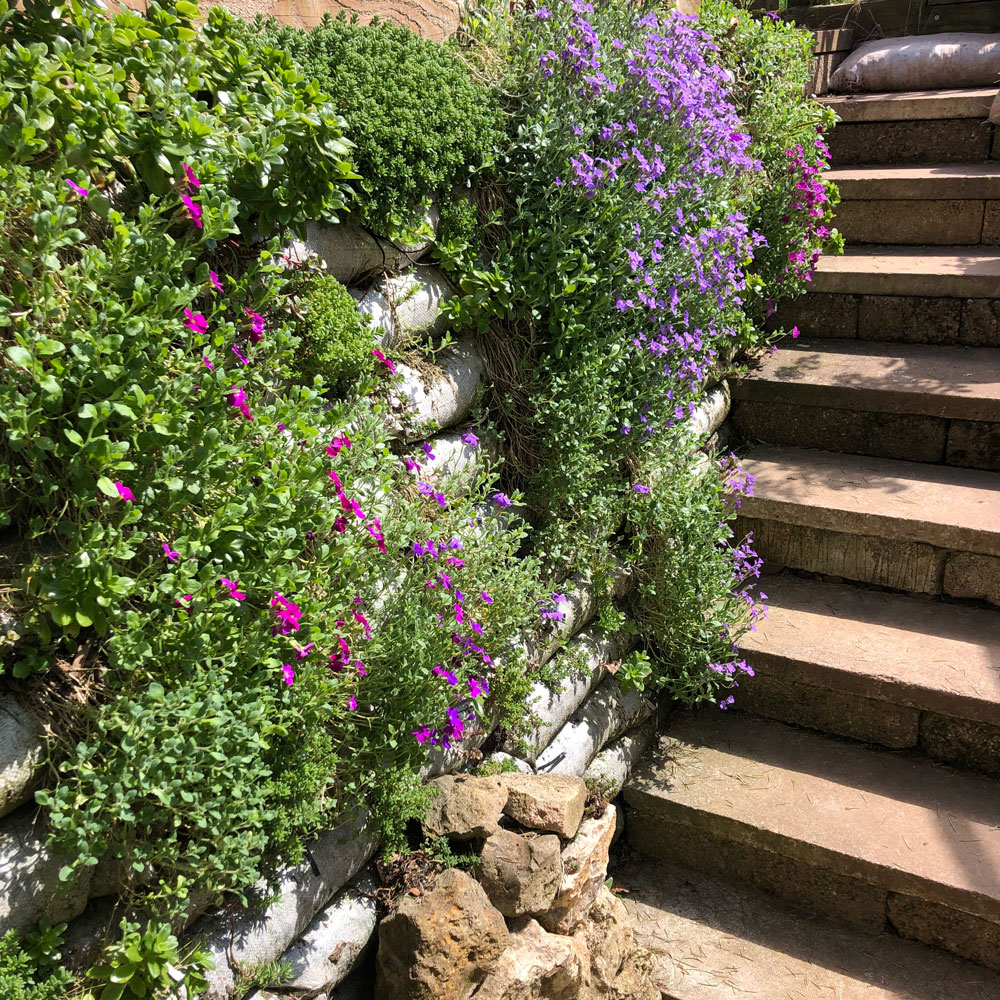
When planning materials for any form of landscaping, be mindful. 'Think of the impact of every material you use in your garden,' encourages Phoebe. 'Try to utilise recycled and reclaimed materials as much as possible and think of sustainable solutions to your hard landscaping.'
Using logs, cob and earth bags will make use of natural, replenishable resources and create beautiful and sustainable solutions for decorative or retaining walls, as well as saving on garden landscaping costs.
5. Encourage wildlife with pollinator planting
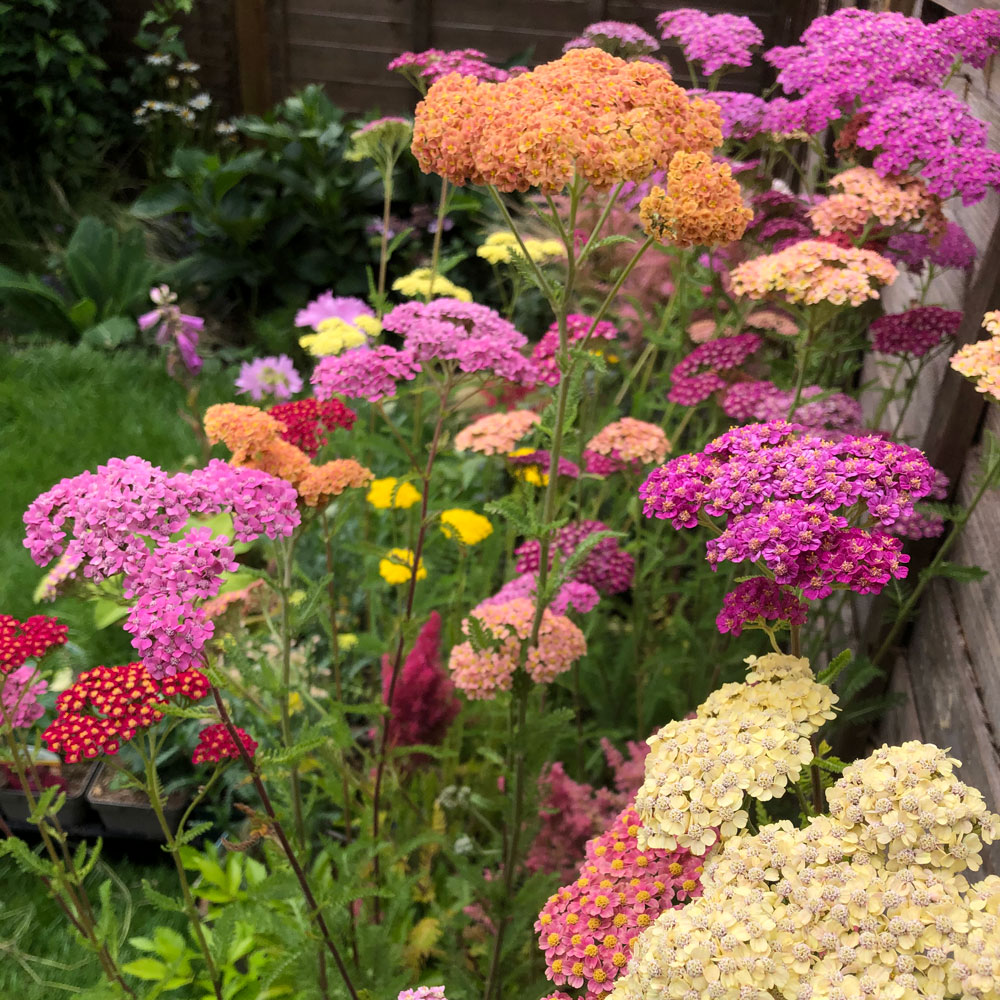
'Opening your garden to nature is crucial to creating a sustainable garden,' says Phoebe at Natural Design Studio. 'Each wildlife species has a role in creating and maintaining a balanced environment. As humans are dependent on a symbiosis of other species offering our gardens as a nature reserve can be part of the long-term solution to species decline.'
'Things you can do to encourage wildlife are planting shrubs and trees. Leaving gaps or spaces in the fence, installing a pond, creating wildflower patches and planting plenty of native, pollinator friendly plants.'
7. Reduce, reuse, recycle & repurpose
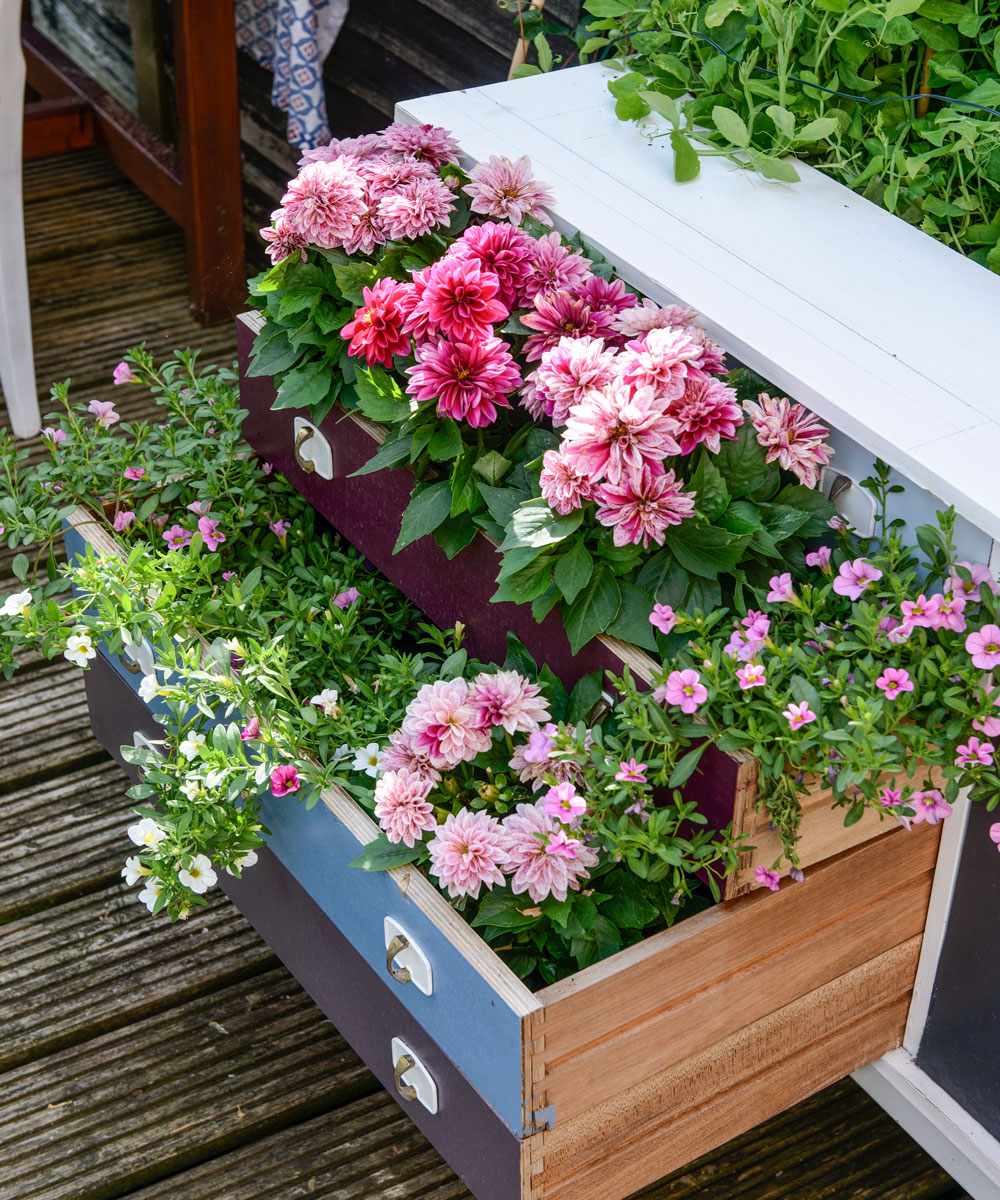
'This mantra applies to gardening as it does to everything else' says James Scott. 'Some simple free garden ideas include: using your garden waste to make your own compost, repurposing unwanted window panes as lids for cold frames. Repairing garden furniture rather than replacing it – or buy second hand.'
8. Be more water efficient
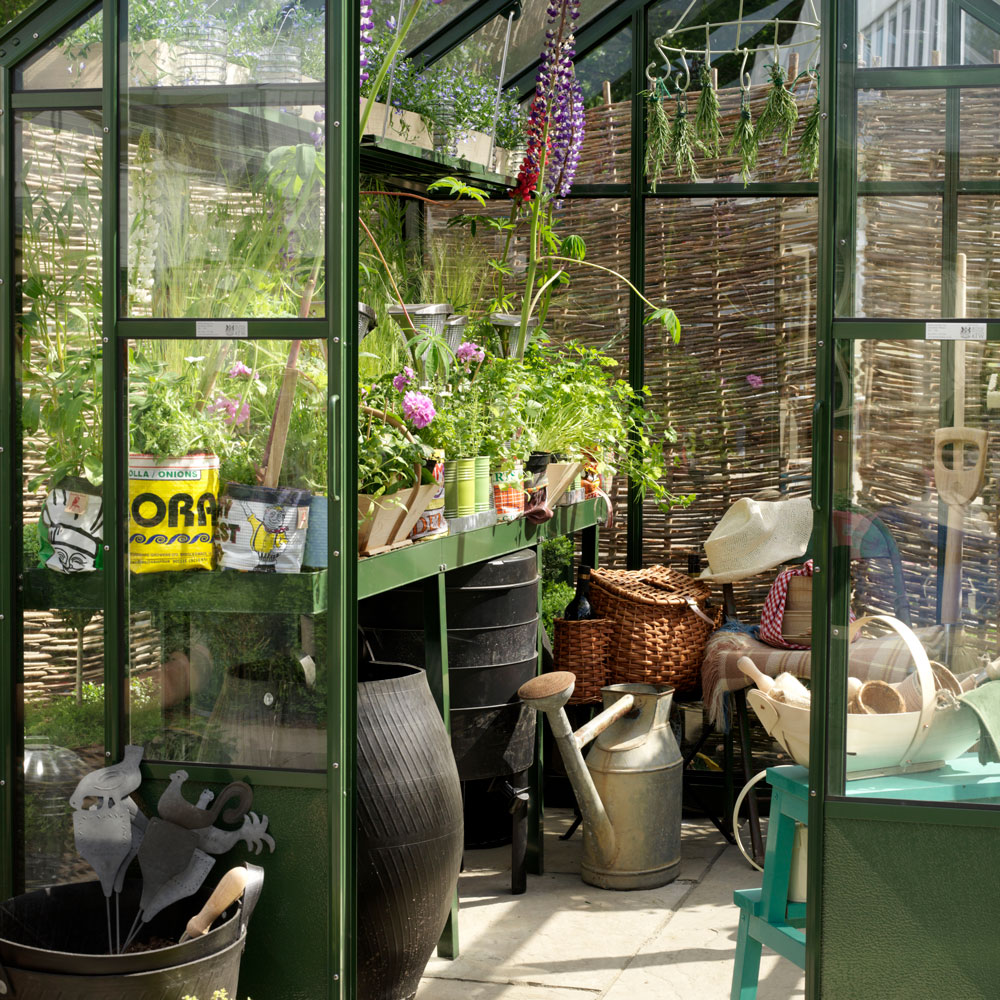
Save water by reducing the need for artificial watering systems on-site (once new gardens are fully established) by designing planting schemes in sustainable gardens to be as self-sufficient as possible.
9. Incorporate edible planting
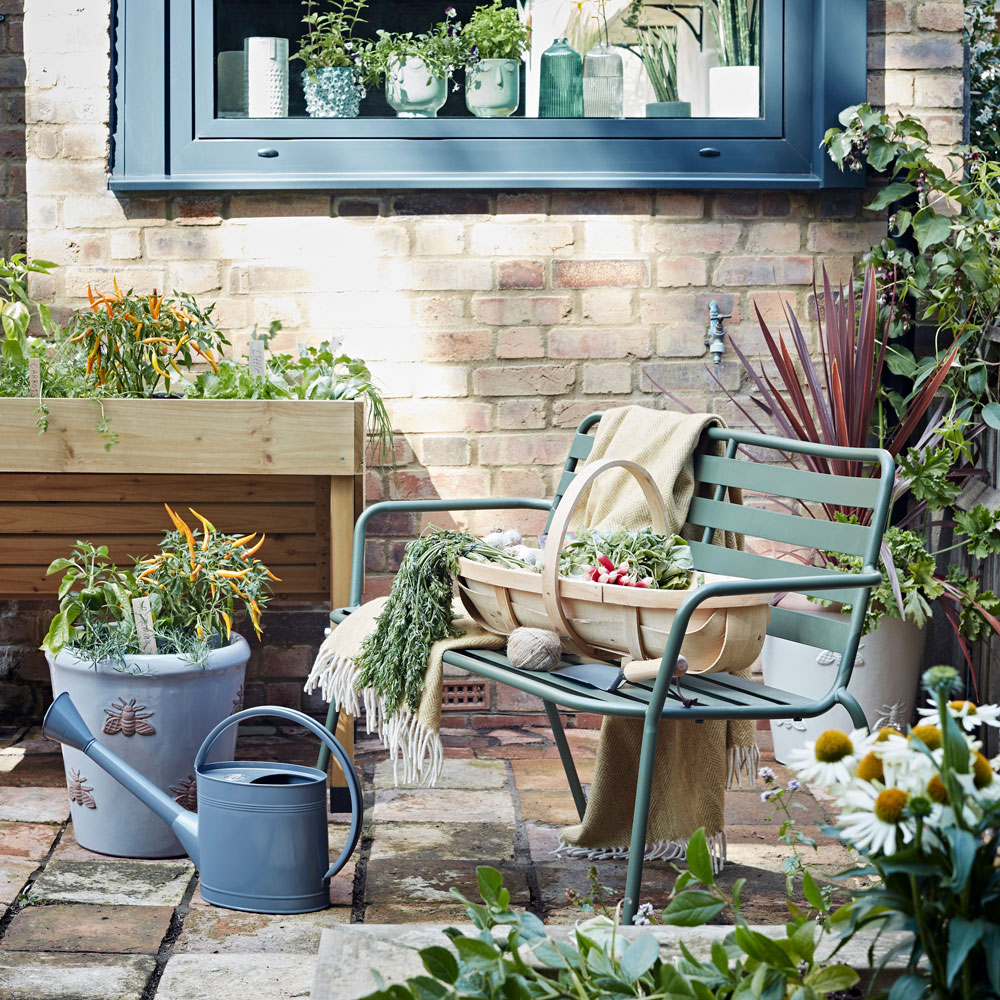
'Incorporate some edible planting by bringing a kitchen garden into the ornamental space,' suggests James. 'Although you may have the space for a large vegetable garden at some distance from the house, it’s good to incorporate a carefully-designed kitchen herb garden closer to the house too – as long as it is aesthetically pleasing as well as practical!'
'Enjoying a few home-grown herbs or vegetables can be a fun way to cut back on buying plastic-wrapped products from the supermarket.'
10. Avoid chemicals – go organic
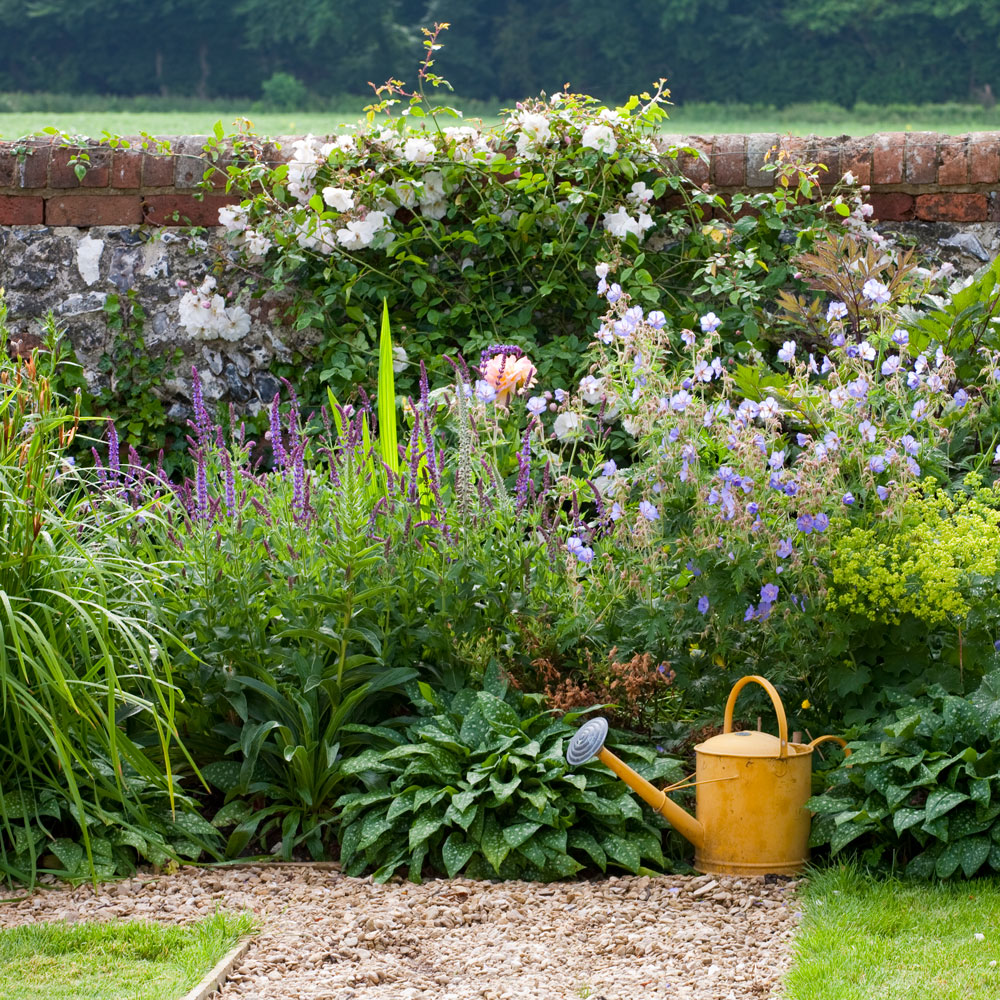
'Chemicals are a short-term fix but they create long term problems,' warns Phoebe. 'Pesticides and herbicides pollute and upset pollinators and microorganisms in the garden. Organic methods and mechanical controls take care of pest and weed problems by creating a balance between species and plants.'
'For example, ladybirds eat greenfly and ground cover plants suppress weeds. This can save you time and money but will also look incredible, ground cover species such as Vinca Minor produce a profusion of periwinkle blue flowers.'
11. Include front gardens
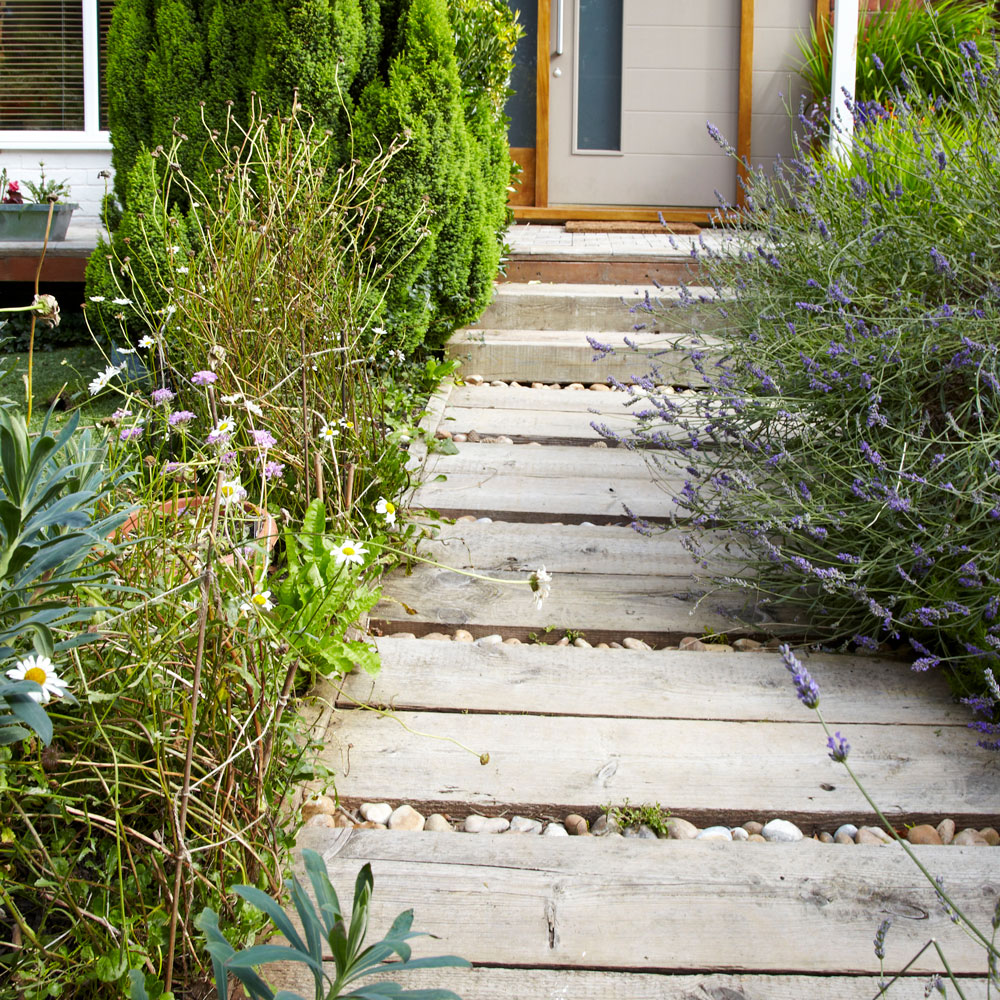
'Front garden ideas can be particularly at risk of being more ‘grey’ than ‘green’ but it is possible to design in planting that works well and still allows space for car parking etc.' explains James Scott.
'For example, vertical planting on walls and boundaries, planting in corners that are not needed for parking, or adding in container planting in a small space.'
12. Choose vernacular materials for hardscaping
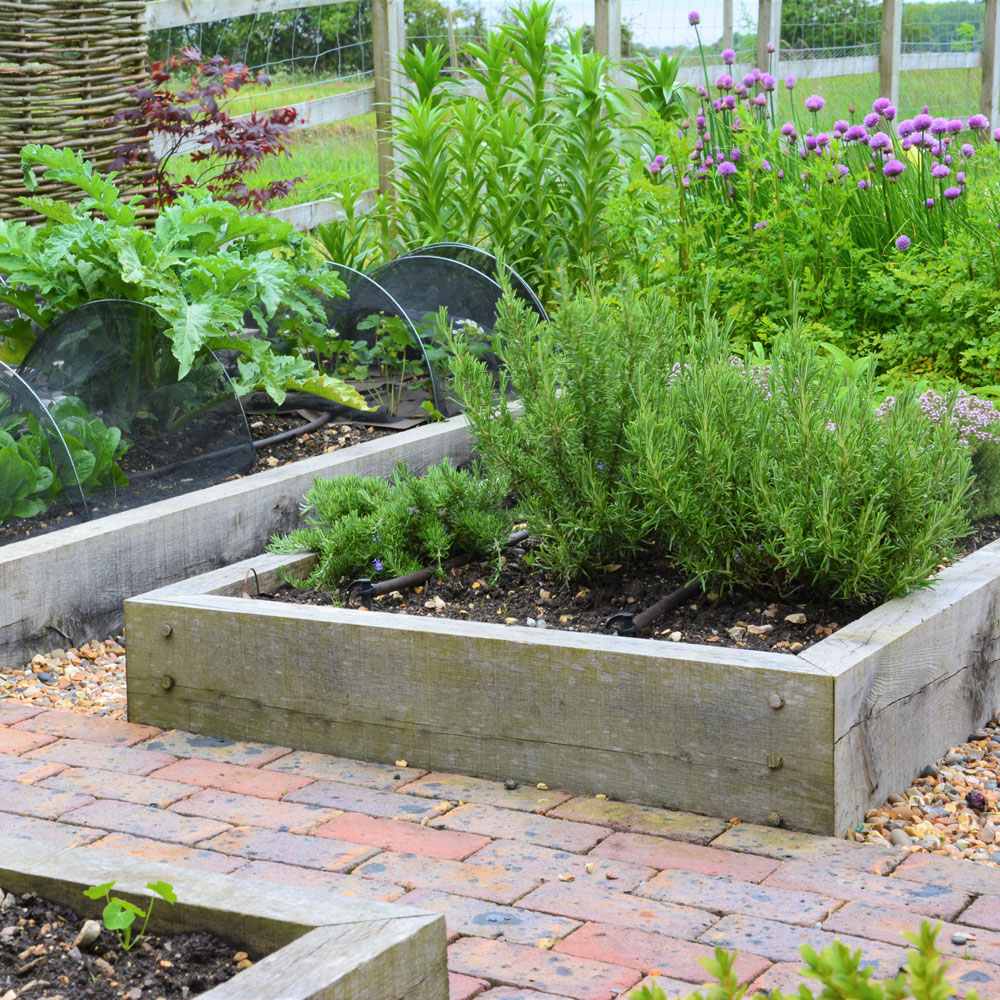
What exactly does that mean? James Scott explains, 'Those that are indigenous to the garden’s setting and reflect local building traditions. They are natural materials and their environmental advantages include much reduced transportation and less energy-intensive production processes.'
13. Establish a sanctuary for wildlife
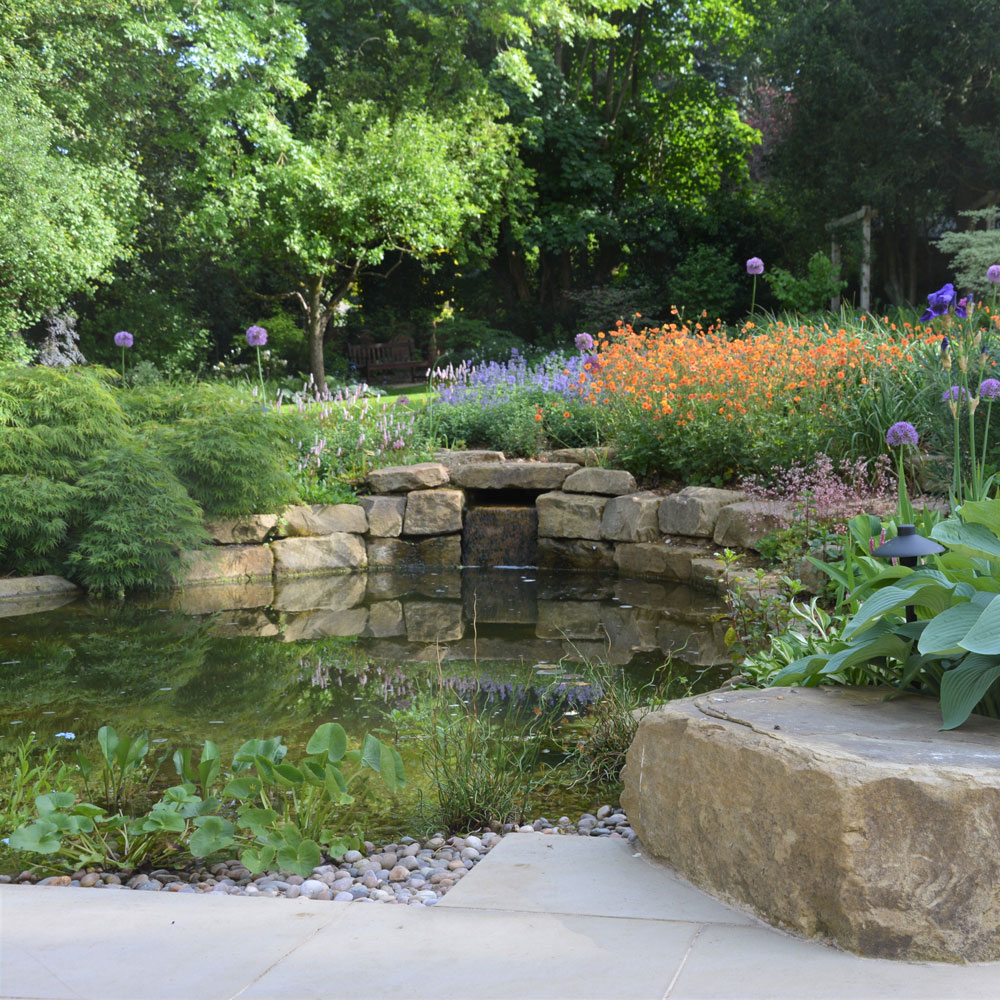
'A private garden can be a vital healthy haven for wildlife in a wider network of places linking urban green spaces with the countryside' says James. 'The opportunities are endless and include: planting wildflower borders or meadows if you have the space.'
'Creating ponds, replacing fences with green boundaries' all help to signify a welcome space for wildlife to thrive. He also suggests, 'Building an insect hotel or introducing a bird feeder. Your garden can become a piece of performing art when it attracts birds, bees and butterflies.'
What makes a sustainable garden?
We asked the experts at the Royal Horticultural Society to define what makes a sustainable garden. 'A sustainable garden will limit use of concrete and other hard landscaping products. Use a minimum of irrigation, maintain fertility with a minimum of bought in fertilisers and manures using composting to generate nutrients.
To create a sustainable garden they recommend, 'Filling all available space with plants including climbers on walls and fences and hedges instead of fences.'
'Have features that support wildlife including ponds and trees. Provide shade from summer heat and shelter from winter chills – reducing the costs of air conditioning and heating dwellings. Control pests, weeds and diseases by integrated pest management rather than relying on pesticides.
'Reduce pollution by choosing plants with hairy leaves, have plenty of planted ground to soak up downpours limiting floods. Avoid using plastics and other materials that are difficult to re-use or recycle.'
Why is sustainable gardening important?
'Sustainable gardening protects the environment from damage, flooding and contamination,' say the RHS. Eco-friendly gardening limits production of greenhouse gases including carbon dioxide and methane and capture carbon in the garden soils helping to counter climate change. 'Use of scarce resources such as water is also reduced by sustainable gardening practices.'

What are sustainable plants?
'Any plant that can be grown without reliance or watering, heavy fertiliser use or require routine pesticide use is sustainable,' says an RHS spokesperson. 'In practice this means careful choice of the right plant for soil and situation and is amenable to good environmental gardening practice to maintain them.'
How can I make my garden more environmentally friendly?
'Grow plenty of plants especially up walls and fences,' recommend the experts at the RHS. 'Plant hedges; consider green roofs; avoid watering lawns; choose plants that suit soil and site. Add trees and ponds if possible, compost where feasible and avoid paving or building over gardens as best you can.
'Plants are key to sustainable gardens with masses of foliage and roots benefitting the environment, biodiversity and indeed human health and well-being. Trees are especially valuable and there are fine small trees even for small gardens. Aim to have plenty of native wild plants as these provide food for caterpillars and other larvae while garden flowers are rich in nectar for adult insects.'
'Where containers are necessary in small patio gardens or on balconies for example try to use rainwater collected off roofs or re-use water from the kitchen and use peat-free potting compost and provide thoughtful ideas on planting and landscaping.'
Tamara was Ideal Home's Digital Editor before joining the Woman & Home team in 2022. She has spent the last 15 years working with the style teams at Country Homes & Interiors and Ideal Home, both now at Future PLC. It’s with these award wining interiors teams that she's honed her skills and passion for shopping, styling and writing. Tamara is always ahead of the curve when it comes to interiors trends – and is great at seeking out designer dupes on the high street.
-
 Will a conservatory add value to your home and how can you maximise it?
Will a conservatory add value to your home and how can you maximise it?This is what the pros say
By Amy Reeves
-
 I’ve been looking for a new signature scent for my home and The White Company's new fragrance is the exact summer holiday smell I needed
I’ve been looking for a new signature scent for my home and The White Company's new fragrance is the exact summer holiday smell I neededSantorini smells fresh, summery and sophisticated
By Kezia Reynolds
-
 How to remove algae from garden walls in five steps – and the cleaning product experts rave about for tackling it fast
How to remove algae from garden walls in five steps – and the cleaning product experts rave about for tackling it fastExperts share their top tips for getting garden walls algae-free
By Katie Sims